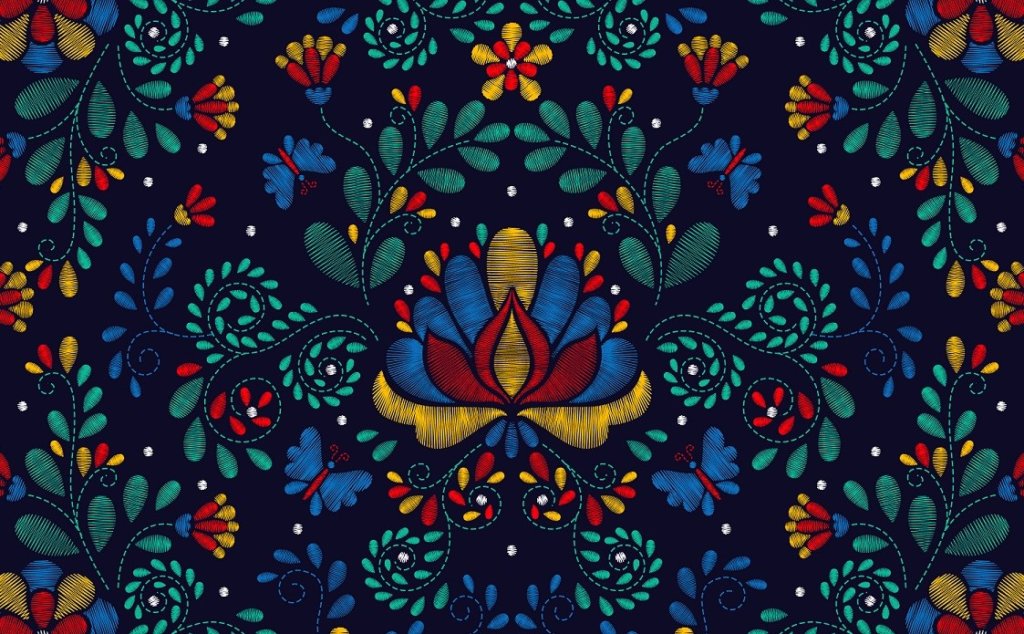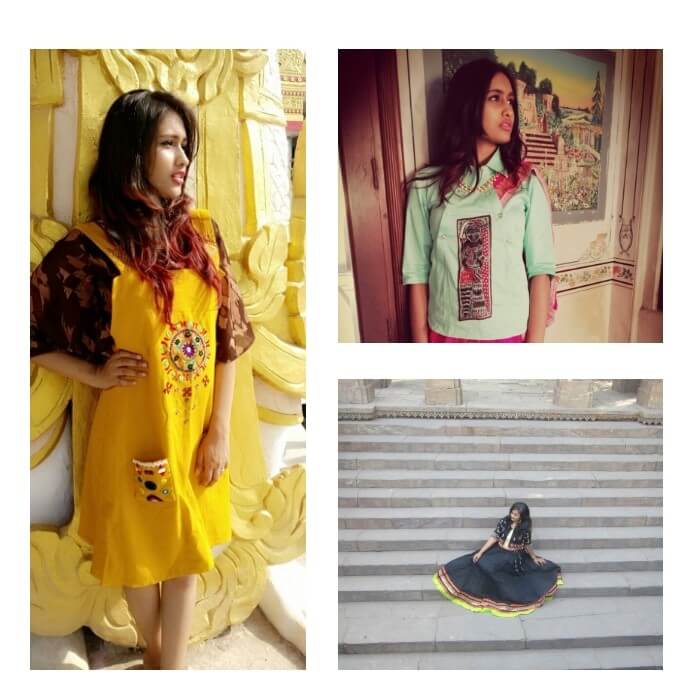
Brief History of Embroidery Art
- December 17, 2019
- Posted by: Rupal Jain
- Category: Art , Fashion , Fashion Design Institute ,
It is observed from the ancient times that even the primitive man decorated themselves through body painting, tattoos and ornamenting their attires. They worshipped ‘MOTHER NATURE’ and it was always one of the main sources of inspiration from which he picked his aspiration for the motifs, colors and various other art forms. Dyeing and Printing of myriad motifs through simple techniques of natural dying was not an end but a start to establish many kinds of arts and crafts.
Embroidery is an adornment of fabric, enriching it with a needle and thread. Gaining an in-depth analysis of overall historical development of embroidery was never an easier task but understanding its origins, makes it easier to view why there are many and varied techniques which comes under the general heading of “EMBROIDERY”.
Many Embroidery stitches no doubt have their foundations in earliest Textiles, Basketry, Weaving, and Mat- making, where stitches were used for joining pieces of fabric or skins together for beautiful and well-defined ornamental purposes.

Here at INIFD Gurukul Ahmedabad, the expert, experienced and knowledgeable senior faculties from the Textiles and Fashion fields have designed the curriculum of fashion designing courses for this aspect of Traditional Indian Embroideries in an outstanding manner. This fashion designing institute has been a pioneer in setting milestones for taking Indian embroideries out of the league wherein the students are not only taught the minute details, history, working procedure, significance, execution of Indian traditional embroideries but also the focus lies on its usage and application in contemporary styles and time.
It also includes styling of the entire process and the end product along with an amazing photoshoot. All in all, the students get in depth power packed bundle of knowledge at our fashion designing institute.
Glimpse of Recent Embroidery Work: Phulkari Embroidery Art – Presentation by Second Year Students
Embroidery Design is a beautiful thread work on a variety of fabrics, which makes the fabric more attractive. Women are the pioneers in creating excellent delicate embroidered garments since ancient times. In India, it has been practiced for sixteenth century which is being traced from the wall paintings, figurines found in Indus Valley Civilization and Sculptures.
Due to its wide diversity in people and customs, we find wide variety in embroidery types i.e. decorating cotton, silk, wool and velvet cloth with various types of stitches and customary colors making the garment too beautiful and attractive. Indians are world famous for their magnificent workmanship and produced the most beautiful handspun and hand-woven textiles, yet preserved and exhibited in many of the known Indian as well as western museums. Many Visitors, Poets, travelers, Tourists appreciated the textiles and embroideries of India to the core.

In gaining an understanding of Indian embroideries it is important to consider India’s positioning in relation to the other countries, its past trade and business invasion and migration patterns. As a result of these factors, changes have been considerable, not least during the twentieth century.
In the early part of the century any study of India would have involved the whole subcontinent, this area has now been divided into the countries of Bangladesh, Pakistan and India.
The Natural movement of people throughout the subcontinent means that similar embroidery art can be found throughout these countries, despite the formation of national boundaries. India shares a pivotal position in Ancient Trade Routes across the Asian subcontinent and this has resulted in the Introduction of many cultural and religious influences from other countries. From the West came trade and influence, from Iran (Persia), from the Aegean Area and from Afghanistan. From the East, notably among the old silk roads, came the rich Textiles from China.
India has a very extensive coast line and for Centuries this has enabled Trade to flourish with many Countries, including Portugal, Holland, France and Britain. These became invaders rather than Trading Partners with obvious effects on the culture and the crafts of India. The areas around Bengal and Gujarat have for hundreds of years been notable centers for Europeans Trading Companies, exporting large quantities of Embroideries and other Textiles.
Each state in the Country is unique by itself as far as textiles, embroidery work and its myriad designs are concerned. The state wise embroideries are unique and not an emulation of others. This is mainly because of the diversity in the mode of people, the availability of indigenously manufactured textile material, base fabric, influence of ecology, traditions and rituals, festivals, deity, occupation, skills, likes, beliefs systems and flare for various motifs, techniques of stitchery, threads and so on.
However, it can be said that localities are totally responsible and are the pioneers of their unique expressions of embroidery. Moreover, these embroideries can be broadly classified as Rural, Folk, Elite and Tribal embroidery depending upon who executes and spreads them.
Fashion always keeps on changing its trend from time to time, place to place and people to people. However, this change has hardly tapped the beauty of the traditional embroidery of any state. In fact, in today’s world the traditional motifs, colors and techniques have occupied almost a permanent base in the field of textiles. It is true that many of the natural, stylized and geometrical designs (motifs) in today’s textiles and fashion designing have been taken from the traditionally based motifs.
Therefore it is very much the need of an hour for the young talented and budding fashion designers to learn, master, imbibe and execute the traditional embroideries, threads, colors, motifs of the important states like Bihar, Kashmir, Himachal Pradesh, Punjab, Rajasthan, Manipur, Gujarat, Karnataka, Uttar Pradesh, Orissa, and many others.
These creative embroideries arts are done on the article of personal wear and also many household decorative accessories. Above both these, embroideries done by the devoted hands are always an excellent gift to reveal the real sentiments of love and devotion.
There is an undoubted increasing demand for the embroidered garments in the modern society due to the fast-changing fashions and their gracious look. Some of the traditional embroideries need to be popularized and developed into an industrial craft in order to save the reminiscent beauty of the past and an everlasting art.
Author: Rupal Jain


